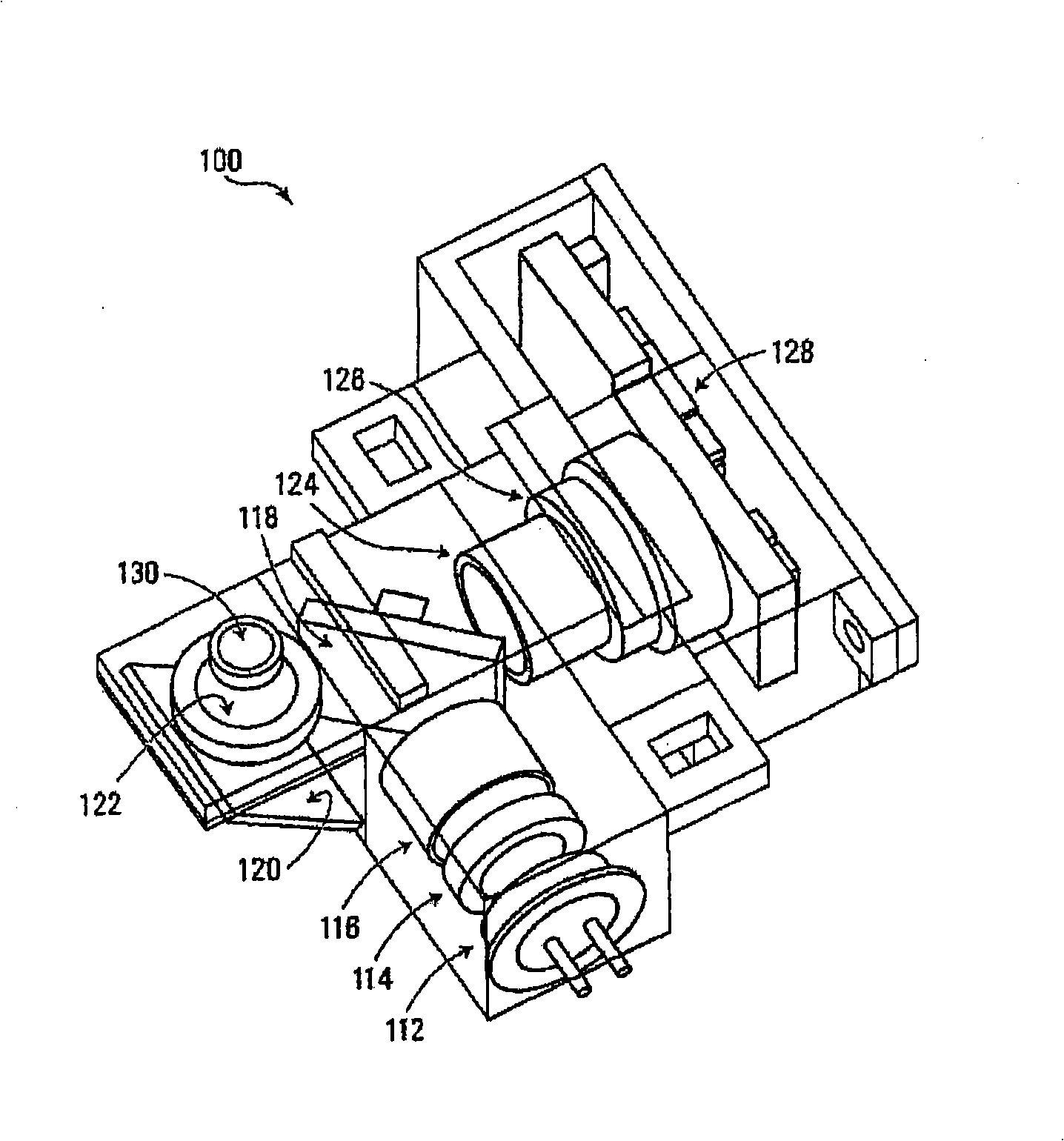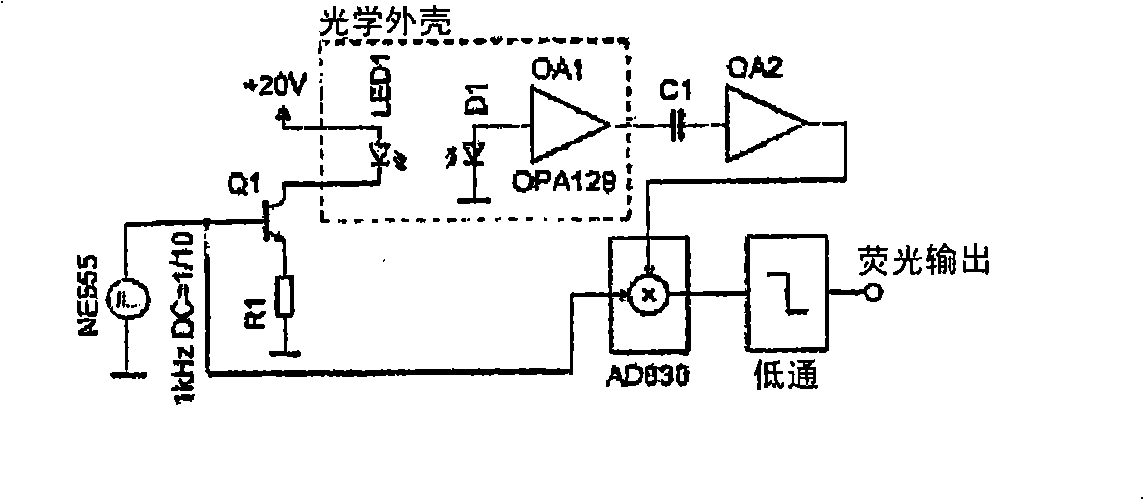Compact optical detection system
A detection system and detector technology, applied in the direction of material analysis, measuring devices, scientific instruments, etc. through optical means, can solve problems such as huge, expensive, and complex detectors
- Summary
- Abstract
- Description
- Claims
- Application Information
AI Technical Summary
Problems solved by technology
Method used
Image
Examples
example 1
[0088] A miniaturized fluorescent system with a size of 30mm×30mm×11mm was designed and tested.
[0089] The properties of the detection system are determined by measuring a series of dilutions of the fluorescent pigment fluorescein. The detection limit was found to be 1.96nmol / L, which was greater than the detection limit required for applications such as real-time PCR.
[0090] The optical detection system has two parts: an excitation part and a detection part. The excitation part included a cyan LED type ETG-5CE490-15 (ETG Corporation) as a light source. The LED has a peak emission wavelength of 490nm, a luminous intensity of 6cd (Cancelles), and a viewing angle of 15°. Due to the viewing angle of the light source, power loss can be observed in the optical path. Therefore, to collimate the light, the top of the LED plastic cover was cut off by milling 0.5mm vertically from the LED chip. Next, the cut surfaces were flattened with aluminum oxide waterproof sandpaper and a...
example 2
[0116] Combined with the optical detection system described above, a miniaturized and economical real-time PCR made of microfabricated silicon was fabricated.
[0117] Here, a compact autonomous real-time RT-PCR device is described as having dimensions of 7 cm x 7 cm x 3 cm and weighing 75 g, or in a second embodiment, having dimensions of 10 cm (diameter) x 6 cm (height) and weighing 150 g.
[0118] Integrate the PCR unit with a miniaturized fluorescent detection system and all electronics necessary for the system to work. A turquoise LED (490mm peak excitation wavelength) was powered by a current pulse with a peak amplitude of 100mA. The photocurrent detected by the photodiode is processed by a lock-in amplifier, making the optical system independent of ambient light.
[0119] Since the device consumes only 3w, a 12Ah battery can be used to power the thermal cycler device for up to 12 hours. The compact size of the thermal cycler device and its power consumption ensure its...
example 3
[0135] Portable Thermal Cycler Devices Tested for Genetic Analysis of Infectious Diseases. Validation of the thermal cycler device by detection of RNA isolated from avian influenza virus (H5NI) using the RNAMaster SYBR Green I RT-PCR Kit (Roche) with PCR primers developed at the Singapore Institute of Molecular and Cell Biology RT-PCR performance.
[0136] Reverse transcription was performed at a temperature of 61 °C for 2 minutes and 30 seconds, followed by a 30-second hot start. Amplification of 50 PCR cycles was performed in the following manner: 95°C for 3 seconds (denaturation), 50°C for 15 seconds (annealing), and 72°C for 20 seconds (renaturation). Once the PCR cycle is complete, at 1 °C s -1 conversion rate to perform melting curve analysis. The total time required to detect viral RNA was 14 minutes.
[0137] Figure 11 Shown is the real-time RT-PCR result of detecting H5N1 virus using the miniaturized thermal cycler device. The critical threshold for detection w...
PUM
| Property | Measurement | Unit |
|---|---|---|
| luminous intensity | aaaaa | aaaaa |
| transmittivity | aaaaa | aaaaa |
Abstract
Description
Claims
Application Information
 Login to View More
Login to View More - R&D
- Intellectual Property
- Life Sciences
- Materials
- Tech Scout
- Unparalleled Data Quality
- Higher Quality Content
- 60% Fewer Hallucinations
Browse by: Latest US Patents, China's latest patents, Technical Efficacy Thesaurus, Application Domain, Technology Topic, Popular Technical Reports.
© 2025 PatSnap. All rights reserved.Legal|Privacy policy|Modern Slavery Act Transparency Statement|Sitemap|About US| Contact US: help@patsnap.com



